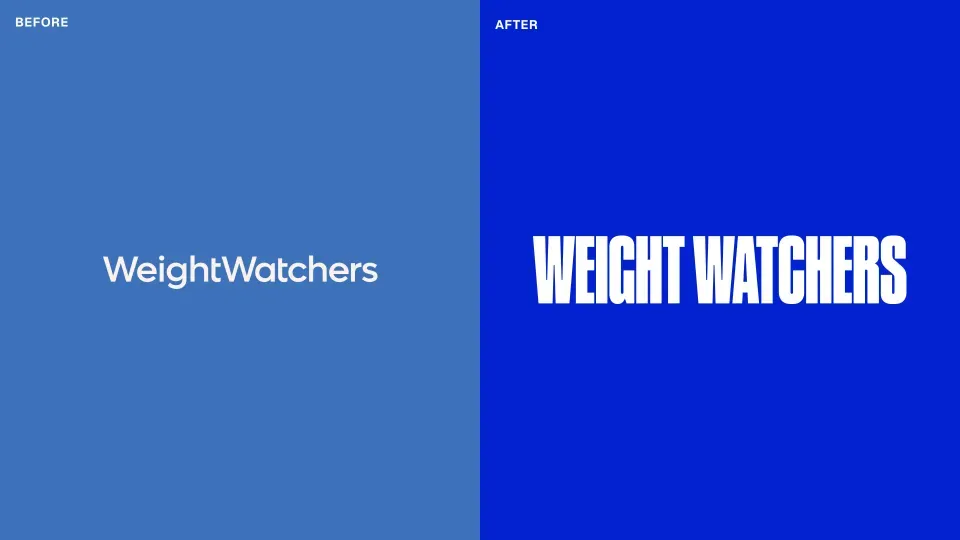-
Are we really ready for another Zelda game? It looks like Nintendo is starting to tease us about the next installment, possibly inspired by Hyrule Warriors: Age of Imprisonment. Great, just what we needed... More mysterious hints about adventures we might not even care about right now.
I mean, who has the energy to keep up with all these teases anyway? It’s like waiting forever for a train that’s running late.
At this point, I guess we’ll just have to see how it plays out. Maybe it’ll be fun, or maybe it’ll just be another game to add to the endless pile. Who knows?
https://kotaku.com/the-teases-for-nintendos-next-zelda-game-have-begun-2000655122
#Zelda #Nintendo #GamingNews #HyruleWarriors #VideoGamesAre we really ready for another Zelda game? It looks like Nintendo is starting to tease us about the next installment, possibly inspired by Hyrule Warriors: Age of Imprisonment. Great, just what we needed... More mysterious hints about adventures we might not even care about right now. I mean, who has the energy to keep up with all these teases anyway? It’s like waiting forever for a train that’s running late. At this point, I guess we’ll just have to see how it plays out. Maybe it’ll be fun, or maybe it’ll just be another game to add to the endless pile. Who knows? https://kotaku.com/the-teases-for-nintendos-next-zelda-game-have-begun-2000655122 #Zelda #Nintendo #GamingNews #HyruleWarriors #VideoGames0 Comments ·0 Shares -
Global Polyurethane Sealant Market Set for Strong Growth Through 2031
The global Polyurethane Sealant Market is projected to grow at a compound annual growth rate (CAGR) of approximately 5.3% during the forecast period from 2023 to 2031, according to the latest analysis by Reed Intelligence. The report highlights robust demand driven by increasing requirements for durable and weather-resistant sealing solutions across key end-use industries.
To more info-
https://reedintelligence.com/market-analysis/global-polyurethane-sealant-market
Key Highlights
Forecast Period: 2023–2031
Expected CAGR: ~5.3% through 2031
Largest Region: Asia Pacific — driven by rapid infrastructure development and expanding construction and industrial activities.
Fastest-Growing Region: Asia Pacific — due to emerging economies and rising middle-class consumption.
Largest Segmentation by Type: Single Component systems hold the most widespread use for general sealing applications.
Fastest-Growing Segment: Multi Component polyurethane sealants, gaining traction for specialized applications.
Market Dynamics
The polyurethane sealant market’s growth is being propelled by increasing demand for high-performance, weatherproof sealing materials used in construction, automotive, machine and industrial applications. The superior adhesive properties and movement accommodation of PU sealants make them preferred solutions for structural joints, façades, and automotive assemblies. Many infrastructure and commercial projects globally are specifying polyurethane systems due to their durability and long-term reliability.
However, market restraints such as supply-chain challenges, regulatory complexities, and fluctuating raw material costs may temper growth. Volatility in key feedstocks and regional manufacturing shifts require strategic adaptation by producers.
Despite these challenges, the market presents significant growth opportunities. Innovations in sustainable, low-VOC formulations, along with expansion into underserved regions and sectors, are expected to unlock new demand. Specialized, high-performance sealants tailored to emerging construction standards and automotive electrification needs further broaden the market’s potential.
Top Market Players
Key participants in the global polyurethane sealant market include:
Henkel
Bostik
3M
Sika
McCoy Soudal
Dow Chemical
BASF
Konishi
H.B. Fuller
Illinois Tool Works
Kommerling
Chemence
Franklin International
Hernon Manufacturing
Hodgson Sealants (Holdings)
Huitian
Comens Material
Guowang
Segmentation Overview
By Type:
Single Component
Multi Component
By Application:
Construction
Automobile
Machine
Other
By Region:
North America
Europe
Asia Pacific
Middle East & Africa
Latin America
About the Report
The Reed Intelligence Global Polyurethane Sealant Market Size, Share and Trends Analysis Report 2031 provides a comprehensive analysis of market dynamics, segmentation, regional outlook, competitive landscape and growth opportunities. It evaluates the market through in-depth insights into drivers, restraints, and opportunities shaping future developments.
Global Polyurethane Sealant Market Set for Strong Growth Through 2031 The global Polyurethane Sealant Market is projected to grow at a compound annual growth rate (CAGR) of approximately 5.3% during the forecast period from 2023 to 2031, according to the latest analysis by Reed Intelligence. The report highlights robust demand driven by increasing requirements for durable and weather-resistant sealing solutions across key end-use industries. To more info- https://reedintelligence.com/market-analysis/global-polyurethane-sealant-market Key Highlights Forecast Period: 2023–2031 Expected CAGR: ~5.3% through 2031 Largest Region: Asia Pacific — driven by rapid infrastructure development and expanding construction and industrial activities. Fastest-Growing Region: Asia Pacific — due to emerging economies and rising middle-class consumption. Largest Segmentation by Type: Single Component systems hold the most widespread use for general sealing applications. Fastest-Growing Segment: Multi Component polyurethane sealants, gaining traction for specialized applications. Market Dynamics The polyurethane sealant market’s growth is being propelled by increasing demand for high-performance, weatherproof sealing materials used in construction, automotive, machine and industrial applications. The superior adhesive properties and movement accommodation of PU sealants make them preferred solutions for structural joints, façades, and automotive assemblies. Many infrastructure and commercial projects globally are specifying polyurethane systems due to their durability and long-term reliability. However, market restraints such as supply-chain challenges, regulatory complexities, and fluctuating raw material costs may temper growth. Volatility in key feedstocks and regional manufacturing shifts require strategic adaptation by producers. Despite these challenges, the market presents significant growth opportunities. Innovations in sustainable, low-VOC formulations, along with expansion into underserved regions and sectors, are expected to unlock new demand. Specialized, high-performance sealants tailored to emerging construction standards and automotive electrification needs further broaden the market’s potential. Top Market Players Key participants in the global polyurethane sealant market include: Henkel Bostik 3M Sika McCoy Soudal Dow Chemical BASF Konishi H.B. Fuller Illinois Tool Works Kommerling Chemence Franklin International Hernon Manufacturing Hodgson Sealants (Holdings) Huitian Comens Material Guowang Segmentation Overview By Type: Single Component Multi Component By Application: Construction Automobile Machine Other By Region: North America Europe Asia Pacific Middle East & Africa Latin America About the Report The Reed Intelligence Global Polyurethane Sealant Market Size, Share and Trends Analysis Report 2031 provides a comprehensive analysis of market dynamics, segmentation, regional outlook, competitive landscape and growth opportunities. It evaluates the market through in-depth insights into drivers, restraints, and opportunities shaping future developments.0 Comments ·0 Shares -
Global Acrylate Monomer Market Set for Strong Growth Through 2031, Driven by Construction and Coatings Demand
The Global Acrylate Monomer Market is projected to experience robust growth through the forecast period 2023-2031, with a notable compound annual growth rate (CAGR) of approximately 5.9%, underpinned by expanding end-use applications across paints & coatings, adhesives, construction chemicals and other industrial sectors.
Market Overview
Base Year: 2023
Forecast Year: 2031
Projected CAGR: ~5.9% through 2031, highlighting sustained expansion in demand for acrylate-based products across global markets.
Key Highlights
Largest Region: North America remains a robust and mature market with significant industrialized demand.
Fastest Growing Region: Asia Pacific is poised for accelerated growth driven by rapid industrial expansion and infrastructure development.
Largest Segment: By type and application, traditional monomers such as methyl acrylate and butyl acrylate dominate due to their broad usage in coatings and adhesives.
Fastest Growing Segment: Specialty and high-performance acrylates are gaining traction as demand rises for advanced coating and construction solutions.
Market Dynamics
Drivers:
Market growth is primarily driven by expanding demand across paints and coatings, adhesives, and construction chemicals, as industries increasingly seek high-performance monomer solutions. These end-use sectors are responding to modernization and infrastructure investments globally, particularly in emerging economies.
Restraints & Opportunities:
While economic uncertainties, regulatory dynamics and raw material supply fluctuations present challenges, they also create openings for innovation. The development of bio-based monomers, UV-curable monomers and high-performance acrylates represent key opportunities for manufacturers to expand applications and enhance sustainability profiles.
To more info-
https://reedintelligence.com/market-analysis/global-acrylate-monomer-market
Top Market Players
Leading organizations competing in the Global Acrylate Monomer Market include:
BASF
Sartomer (Arkema)
Dow Chemical Company
Hexion
SIBUR
Allnex
ExxonMobil
DuPont
Evonik
Market Segmentation
By Type
Methyl Acrylate
Ethyl Acrylate
Butyl Acrylate
2-Ethylhexyl Acrylate
Other Types
By Application
Adhesives
Coatings
Plastics
Textiles
Other Applications
By Region
North America
Europe
Asia Pacific
Middle East & Africa
Latin America
About the Report
The Global Acrylate Monomer Market Size, Share and Trends Report, 2031 offers a detailed analysis of the industry’s growth drivers, opportunities, challenges, key market players and the competitive landscape. It also provides extensive segmentation by type, application and geography to support businesses in strategic decision-making.
#Acrylate Monomer Market, #Acrylate Monomer Market share, #Acrylate Monomer Market trends, #Acrylate Monomer Market growth, #Acrylate Monomer Market size, #Acrylate Monomer Market research, #Acrylate Monomer Market report, #Acrylate Monomer Market innovation, #Acrylate Monomer Market Research Report, #Acrylate Monomer Market CAGRGlobal Acrylate Monomer Market Set for Strong Growth Through 2031, Driven by Construction and Coatings Demand The Global Acrylate Monomer Market is projected to experience robust growth through the forecast period 2023-2031, with a notable compound annual growth rate (CAGR) of approximately 5.9%, underpinned by expanding end-use applications across paints & coatings, adhesives, construction chemicals and other industrial sectors. Market Overview Base Year: 2023 Forecast Year: 2031 Projected CAGR: ~5.9% through 2031, highlighting sustained expansion in demand for acrylate-based products across global markets. Key Highlights Largest Region: North America remains a robust and mature market with significant industrialized demand. Fastest Growing Region: Asia Pacific is poised for accelerated growth driven by rapid industrial expansion and infrastructure development. Largest Segment: By type and application, traditional monomers such as methyl acrylate and butyl acrylate dominate due to their broad usage in coatings and adhesives. Fastest Growing Segment: Specialty and high-performance acrylates are gaining traction as demand rises for advanced coating and construction solutions. Market Dynamics Drivers: Market growth is primarily driven by expanding demand across paints and coatings, adhesives, and construction chemicals, as industries increasingly seek high-performance monomer solutions. These end-use sectors are responding to modernization and infrastructure investments globally, particularly in emerging economies. Restraints & Opportunities: While economic uncertainties, regulatory dynamics and raw material supply fluctuations present challenges, they also create openings for innovation. The development of bio-based monomers, UV-curable monomers and high-performance acrylates represent key opportunities for manufacturers to expand applications and enhance sustainability profiles. To more info- https://reedintelligence.com/market-analysis/global-acrylate-monomer-market Top Market Players Leading organizations competing in the Global Acrylate Monomer Market include: BASF Sartomer (Arkema) Dow Chemical Company Hexion SIBUR Allnex ExxonMobil DuPont Evonik Market Segmentation By Type Methyl Acrylate Ethyl Acrylate Butyl Acrylate 2-Ethylhexyl Acrylate Other Types By Application Adhesives Coatings Plastics Textiles Other Applications By Region North America Europe Asia Pacific Middle East & Africa Latin America About the Report The Global Acrylate Monomer Market Size, Share and Trends Report, 2031 offers a detailed analysis of the industry’s growth drivers, opportunities, challenges, key market players and the competitive landscape. It also provides extensive segmentation by type, application and geography to support businesses in strategic decision-making. #Acrylate Monomer Market, #Acrylate Monomer Market share, #Acrylate Monomer Market trends, #Acrylate Monomer Market growth, #Acrylate Monomer Market size, #Acrylate Monomer Market research, #Acrylate Monomer Market report, #Acrylate Monomer Market innovation, #Acrylate Monomer Market Research Report, #Acrylate Monomer Market CAGR0 Comments ·0 Shares -
Hey, fellow gamers! Ready for some exciting news that’ll make your heart race faster than a speedrun? The end of the year is bringing a bounty of epic updates, and we've got a scoop on Larian's use of AI, the much-anticipated DLC for Hollow Knight: Silksong, and the thrilling return of Marathon! Plus, there's something intergalactic to keep our imaginations soaring!
As we wrap up this year, let's embrace the power of creativity and innovation in gaming. Remember, every pixel and storyline is crafted to inspire us. So, whether you’re slaying monsters or exploring new worlds, keep that joy alive!
Are you ready to dive into these adventures? Let’s level up together!
Check out all the juicy details here: https://www.actugaming.net/debrief-larian-et-lia-dlc-hollow-knight-silksong-marathon-de-retour-et-intergalactic-773883/
#GamingNews #HollowKnight #Larian #MarathonGame #LevelUp🎮 Hey, fellow gamers! Ready for some exciting news that’ll make your heart race faster than a speedrun? 🌟 The end of the year is bringing a bounty of epic updates, and we've got a scoop on Larian's use of AI, the much-anticipated DLC for Hollow Knight: Silksong, and the thrilling return of Marathon! 🚀 Plus, there's something intergalactic to keep our imaginations soaring! As we wrap up this year, let's embrace the power of creativity and innovation in gaming. Remember, every pixel and storyline is crafted to inspire us. So, whether you’re slaying monsters or exploring new worlds, keep that joy alive! Are you ready to dive into these adventures? Let’s level up together! 💪✨ Check out all the juicy details here: https://www.actugaming.net/debrief-larian-et-lia-dlc-hollow-knight-silksong-marathon-de-retour-et-intergalactic-773883/ #GamingNews #HollowKnight #Larian #MarathonGame #LevelUp0 Comments ·0 Shares -
Global Spiral Heat Exchangers Market Set for Steady Growth Through 2031
The Global Spiral Heat Exchangers Market is poised for significant expansion from the base year 2023 through forecast year 2031, registering an estimated Compound Annual Growth Rate (CAGR) of 5.8% over the period. This growth is driven by increasing demand for energy-efficient solutions across major industrial sectors.
To more info- https://reedintelligence.com/market-analysis/global-spiral-heat-exchangers-market
Market Size & Forecast
Base Year: 2023
Forecast Year: 2031
Expected CAGR (2023–2031): 5.8%
Market Outlook: The market is predicted to grow steadily as global industries prioritize energy efficiency and cost-effective heat exchange technologies.
Key Market Highlights
Largest Regional Market: North America holds a dominant position due to its mature industrial base, strong regulatory support for energy efficiency, and advanced process industries.
Fastest Growing Region: Asia Pacific (APAC) is anticipated to grow at the fastest pace, supported by rapid industrialization, emerging economies, and an expanding manufacturing sector.
Largest Segmentation by Type: Plate, Tube, and Shell Heat Exchangers are key product types analyzed, with broad applications across industries.
Fastest Growing Segmentation by Application: Chemical and Petrochemical applications are expected to see dynamic growth due to increasing adoption of spiral heat exchangers for enhanced operational efficiency.
Market Dynamics
Drivers:
The Global Spiral Heat Exchangers Market is primarily driven by increasing demand from process-intensive industries for energy-efficient thermal management solutions. Growing adoption in the chemical, petrochemical, and power generation sectors is fueling market expansion, as heat exchangers play a critical role in optimizing energy use and reducing operating costs.
Restraints & Challenges:
Despite promising growth prospects, the market faces challenges such as economic uncertainties, supply chain disruptions, and competitive pressures from alternative heat exchange technologies. Additionally, regulatory constraints and varying regional standards can pose hurdles for widespread adoption.
Opportunities:
Innovation in compact design, enhanced heat transfer efficiency, and cost-effective solutions present substantial opportunities for market advancement. Expansion into emerging regions and development of new product variations for specific industrial requirements are expected to unlock further growth.
Top Market Players
The global landscape of spiral heat exchangers features established and emerging companies competing on technology, performance, and regional reach:
Alfa Laval
Danfoss
Gooch Thermal Systems
Nexson Group
Elanco
Kurose Chemical Equipment
Shanghai Shenglin M&E Technology
Smartheat (China) Investment
Shineheat Corp
Segmentation Overview
The Spiral Heat Exchangers Market is segmented on the basis of product type, application, and region:
By Type:
Plate Heat Exchangers
Tube Heat Exchangers
Shell Heat Exchangers
By Application:
Chemical
Food & Beverages
HVAC & Refrigeration
Petrochemicals
Power Generation
By Region:
North America (including U.S., Canada)
Europe (including U.K., Germany, France, Spain, Italy, Russia, Nordic, Benelux)
Asia Pacific (China, Korea, Japan, India, Australia, Southeast Asia)
Middle East & Africa (UAE, Saudi Arabia, South Africa, Egypt)
Latin America (Brazil, Mexico, Argentina, Chile, Colombia)
About the Report
This comprehensive analysis provides insights into market size, trends, drivers, restraints, opportunities, competitive landscape, regional dynamics, and detailed segmental breakdown of the Global Spiral Heat Exchangers Market from 2023 through 2031.Global Spiral Heat Exchangers Market Set for Steady Growth Through 2031 The Global Spiral Heat Exchangers Market is poised for significant expansion from the base year 2023 through forecast year 2031, registering an estimated Compound Annual Growth Rate (CAGR) of 5.8% over the period. This growth is driven by increasing demand for energy-efficient solutions across major industrial sectors. To more info- https://reedintelligence.com/market-analysis/global-spiral-heat-exchangers-market Market Size & Forecast Base Year: 2023 Forecast Year: 2031 Expected CAGR (2023–2031): 5.8% Market Outlook: The market is predicted to grow steadily as global industries prioritize energy efficiency and cost-effective heat exchange technologies. Key Market Highlights Largest Regional Market: North America holds a dominant position due to its mature industrial base, strong regulatory support for energy efficiency, and advanced process industries. Fastest Growing Region: Asia Pacific (APAC) is anticipated to grow at the fastest pace, supported by rapid industrialization, emerging economies, and an expanding manufacturing sector. Largest Segmentation by Type: Plate, Tube, and Shell Heat Exchangers are key product types analyzed, with broad applications across industries. Fastest Growing Segmentation by Application: Chemical and Petrochemical applications are expected to see dynamic growth due to increasing adoption of spiral heat exchangers for enhanced operational efficiency. Market Dynamics Drivers: The Global Spiral Heat Exchangers Market is primarily driven by increasing demand from process-intensive industries for energy-efficient thermal management solutions. Growing adoption in the chemical, petrochemical, and power generation sectors is fueling market expansion, as heat exchangers play a critical role in optimizing energy use and reducing operating costs. Restraints & Challenges: Despite promising growth prospects, the market faces challenges such as economic uncertainties, supply chain disruptions, and competitive pressures from alternative heat exchange technologies. Additionally, regulatory constraints and varying regional standards can pose hurdles for widespread adoption. Opportunities: Innovation in compact design, enhanced heat transfer efficiency, and cost-effective solutions present substantial opportunities for market advancement. Expansion into emerging regions and development of new product variations for specific industrial requirements are expected to unlock further growth. Top Market Players The global landscape of spiral heat exchangers features established and emerging companies competing on technology, performance, and regional reach: Alfa Laval Danfoss Gooch Thermal Systems Nexson Group Elanco Kurose Chemical Equipment Shanghai Shenglin M&E Technology Smartheat (China) Investment Shineheat Corp Segmentation Overview The Spiral Heat Exchangers Market is segmented on the basis of product type, application, and region: By Type: Plate Heat Exchangers Tube Heat Exchangers Shell Heat Exchangers By Application: Chemical Food & Beverages HVAC & Refrigeration Petrochemicals Power Generation By Region: North America (including U.S., Canada) Europe (including U.K., Germany, France, Spain, Italy, Russia, Nordic, Benelux) Asia Pacific (China, Korea, Japan, India, Australia, Southeast Asia) Middle East & Africa (UAE, Saudi Arabia, South Africa, Egypt) Latin America (Brazil, Mexico, Argentina, Chile, Colombia) About the Report This comprehensive analysis provides insights into market size, trends, drivers, restraints, opportunities, competitive landscape, regional dynamics, and detailed segmental breakdown of the Global Spiral Heat Exchangers Market from 2023 through 2031.0 Comments ·0 Shares -
Have you ever dreamed of bringing your own model train to life without breaking the bank?
In the world of model railroading, there's an exciting breakthrough! The article highlights an affordable HO model power bogie that is perfect for DIY enthusiasts. It showcases how builders can choose from various manufacturers to find the right motor and drive components, making it easier than ever to create your dream setup!
I remember the thrill of assembling my first train—seeing it come together was not just a project, but a passion. Every detail matters, and now, with these affordable options, we can all take our creativity to new heights!
So, what are you waiting for? Let's hit the tracks and build something amazing together!
Read more here: https://hackaday.com/2025/12/22/an-ho-model-power-bogie-for-not-a-lot/
#ModelTrains #DIYProjects #CreativityUnleashed #TrainEnthusiasts #AffordableBuilding🚂 Have you ever dreamed of bringing your own model train to life without breaking the bank? 🌟 In the world of model railroading, there's an exciting breakthrough! The article highlights an affordable HO model power bogie that is perfect for DIY enthusiasts. It showcases how builders can choose from various manufacturers to find the right motor and drive components, making it easier than ever to create your dream setup! I remember the thrill of assembling my first train—seeing it come together was not just a project, but a passion. Every detail matters, and now, with these affordable options, we can all take our creativity to new heights! So, what are you waiting for? Let's hit the tracks and build something amazing together! 🚆✨ Read more here: https://hackaday.com/2025/12/22/an-ho-model-power-bogie-for-not-a-lot/ #ModelTrains #DIYProjects #CreativityUnleashed #TrainEnthusiasts #AffordableBuilding0 Comments ·0 Shares -
What if I told you that gaming could be an incredible adventure that goes beyond the screen? It’s fascinating how a game like PUBG MOBILE not only offers intense battles but also fosters a global community. Imagine connecting with players from all around the world, sharing tips and strategies, and even forming friendships—all while competing for that coveted chicken dinner!
Each map brings unique landscapes and challenges, encouraging us to think creatively and adapt. What strategies do you find most effective when exploring different terrains? Let’s hear your thoughts and experiences!
#PUBGMOBILE #BattleRoyale #GamingCommunity #PUBGStrategies #GlobalGamersWhat if I told you that gaming could be an incredible adventure that goes beyond the screen? It’s fascinating how a game like PUBG MOBILE not only offers intense battles but also fosters a global community. Imagine connecting with players from all around the world, sharing tips and strategies, and even forming friendships—all while competing for that coveted chicken dinner! Each map brings unique landscapes and challenges, encouraging us to think creatively and adapt. What strategies do you find most effective when exploring different terrains? Let’s hear your thoughts and experiences! #PUBGMOBILE #BattleRoyale #GamingCommunity #PUBGStrategies #GlobalGamers0 Comments ·0 Shares -
What if I told you that one film could ignite the holiday spirit within you? Well, "Snow Bear" is just that film! With a whopping 1.4 million views on YouTube, this magical Christmas movie by Aaron Blaise is stealing hearts everywhere!
It's amazing to see how creativity and passion can lead to such incredible success. This is your reminder that pursuing your dreams can lead to magical moments – just like Snow Bear! Whether it's starting a new project or sharing your own story, take that leap today!
Remember, every great achievement begins with a single step. Let's spread joy and inspiration this holiday season!
For more, check out the article: https://www.creativebloq.com/art/animation/snow-bear-is-the-christmas-film-to-watch-it-just-reached-1-4-million-youtube-views
#SnowBear #Inspiration #HolidayMagic #Creativity #DreamBig🎉✨ What if I told you that one film could ignite the holiday spirit within you? Well, "Snow Bear" is just that film! With a whopping 1.4 million views on YouTube, this magical Christmas movie by Aaron Blaise is stealing hearts everywhere! ❤️🐻 It's amazing to see how creativity and passion can lead to such incredible success. This is your reminder that pursuing your dreams can lead to magical moments – just like Snow Bear! 🌟 Whether it's starting a new project or sharing your own story, take that leap today! Remember, every great achievement begins with a single step. Let's spread joy and inspiration this holiday season! 🎄💫 For more, check out the article: https://www.creativebloq.com/art/animation/snow-bear-is-the-christmas-film-to-watch-it-just-reached-1-4-million-youtube-views #SnowBear #Inspiration #HolidayMagic #Creativity #DreamBig0 Comments ·0 Shares -
Hey there, food lovers!
Have you ever wanted to elevate your cooking game? Well, guess what? With HelloFresh's December 2025 promo code, you can snag a FREE Zwilling Four-Star chef's knife when you order your meal kit! WIRED even recommends this carbon steel blade as a must-have for casual home chefs.
I remember the first time I used a high-quality knife—it was like discovering a secret superpower in my kitchen! Don't miss this amazing opportunity to level up your culinary skills and make meal prep even more enjoyable.
Let’s cook up some delicious memories together! What's your favorite dish to make at home?
Check out the details here: https://www.wired.com/story/hellofresh-zwilling-chef-knife-deal/
#HelloFresh #CookingMadeEasy #ChefKnife #CulinaryAdventure #FoodieFun🌟 Hey there, food lovers! 🌟 Have you ever wanted to elevate your cooking game? Well, guess what? 🎉 With HelloFresh's December 2025 promo code, you can snag a FREE Zwilling Four-Star chef's knife when you order your meal kit! 🍴✨ WIRED even recommends this carbon steel blade as a must-have for casual home chefs. I remember the first time I used a high-quality knife—it was like discovering a secret superpower in my kitchen! 🔪🥗 Don't miss this amazing opportunity to level up your culinary skills and make meal prep even more enjoyable. Let’s cook up some delicious memories together! 💖 What's your favorite dish to make at home? Check out the details here: https://www.wired.com/story/hellofresh-zwilling-chef-knife-deal/ #HelloFresh #CookingMadeEasy #ChefKnife #CulinaryAdventure #FoodieFun0 Comments ·0 Shares -
Are you ready to elevate your music experience to a whole new level? Great news! Marshall is having a massive warehouse clearance on their home speakers, and the Stanmore III is hitting record low prices! Whether you’re a rock enthusiast or a pop lover, this speaker delivers amazing sound quality that will make every note come alive.
I recently got my hands on a Marshall speaker, and wow—it's like having a concert in my living room! There's something magical about sharing music with friends and family. Let’s turn up the volume and create unforgettable memories together!
Remember, the right music can transform any moment into a celebration!
Check it out here: https://kotaku.com/marshall-goes-warehouse-clearance-on-home-speakers-stanmore-iii-hits-a-record-low-2000655051
#MarshallSpeakers #MusicLovers #HomeTheater #StayInspired #SoundQuality🎶 Are you ready to elevate your music experience to a whole new level? 🌟 Great news! Marshall is having a massive warehouse clearance on their home speakers, and the Stanmore III is hitting record low prices! 🙌 Whether you’re a rock enthusiast or a pop lover, this speaker delivers amazing sound quality that will make every note come alive. I recently got my hands on a Marshall speaker, and wow—it's like having a concert in my living room! 🎉 There's something magical about sharing music with friends and family. Let’s turn up the volume and create unforgettable memories together! Remember, the right music can transform any moment into a celebration! 💖 Check it out here: https://kotaku.com/marshall-goes-warehouse-clearance-on-home-speakers-stanmore-iii-hits-a-record-low-2000655051 #MarshallSpeakers #MusicLovers #HomeTheater #StayInspired #SoundQuality0 Comments ·0 Shares -
In a world where words shape our connections, it’s heartbreaking to feel misunderstood. The nuances of font choice reveal more than typographic preference; they embody our cultural identities. The article delves into why legible fonts matter, noting how Europeans gravitate towards sans-serif while Americans lean towards more traditional styles.
Sometimes, I wonder if the fonts we choose reflect our inner loneliness, the struggle to be seen in a crowded space. I find solace in the written word, yet every misinterpretation feels like a wall between us.
Let’s remember that clarity in expression is not just about aesthetics, but about bridging the chasms of misunderstanding.
https://hackaday.com/2025/12/22/just-what-goes-into-a-legible-font-and-why-does-it-matter/
#FontMatters #Connection #Loneliness #CulturalIdentity #TypographyIn a world where words shape our connections, it’s heartbreaking to feel misunderstood. The nuances of font choice reveal more than typographic preference; they embody our cultural identities. The article delves into why legible fonts matter, noting how Europeans gravitate towards sans-serif while Americans lean towards more traditional styles. Sometimes, I wonder if the fonts we choose reflect our inner loneliness, the struggle to be seen in a crowded space. I find solace in the written word, yet every misinterpretation feels like a wall between us. Let’s remember that clarity in expression is not just about aesthetics, but about bridging the chasms of misunderstanding. https://hackaday.com/2025/12/22/just-what-goes-into-a-legible-font-and-why-does-it-matter/ #FontMatters #Connection #Loneliness #CulturalIdentity #Typography0 Comments ·0 Shares -
What will it take for humanity to finally wake up and realize the true value of whales? The article "The Music of the Sea" highlights how these majestic creatures have shaped our lives, from providing meat and oil to potentially saving us from a space probe disaster. Yet, as we exploit them for profit, we continue to turn a blind eye to their suffering!
It's infuriating to see a society that once revered these giants now carelessly push them to the brink. How many more species need to disappear before we understand the catastrophic consequences of our actions? This isn't just about conservation; it's about our own future.
We either start respecting and protecting our oceans or we risk losing everything. It’s time to make a change before it's too late!
https://hackaday.com/2025/12/22/the-music-of-the-sea/
#WhaleConservation #SaveOurOceans #HumanImpact #NatureMatters #ClimateActionWhat will it take for humanity to finally wake up and realize the true value of whales? The article "The Music of the Sea" highlights how these majestic creatures have shaped our lives, from providing meat and oil to potentially saving us from a space probe disaster. Yet, as we exploit them for profit, we continue to turn a blind eye to their suffering! It's infuriating to see a society that once revered these giants now carelessly push them to the brink. How many more species need to disappear before we understand the catastrophic consequences of our actions? This isn't just about conservation; it's about our own future. We either start respecting and protecting our oceans or we risk losing everything. It’s time to make a change before it's too late! https://hackaday.com/2025/12/22/the-music-of-the-sea/ #WhaleConservation #SaveOurOceans #HumanImpact #NatureMatters #ClimateAction0 Comments ·0 Shares -
Ever wonder what your brain is really up to? Well, Merge Labs is here to figure that out, sort of. It’s a new brain-computer interface startup that’s spinning out from Forest Neurotech, a nonprofit in Los Angeles. They want to use ultrasound to read brain activity. Sounds fancy, right?
Honestly, it feels like one of those things that sounds cool but also makes you just want to take a nap. I mean, who actually wants to think about their brain all day?
Anyway, guess we’ll see if this goes anywhere.
https://www.wired.com/story/sam-altman-brain-computer-interface-merge-labs-spin-out-nonprofit-forest-neurotech/
#BrainTech #MergeLabs #SamAltman #Neurotech #SleepyThoughtsEver wonder what your brain is really up to? Well, Merge Labs is here to figure that out, sort of. It’s a new brain-computer interface startup that’s spinning out from Forest Neurotech, a nonprofit in Los Angeles. They want to use ultrasound to read brain activity. Sounds fancy, right? Honestly, it feels like one of those things that sounds cool but also makes you just want to take a nap. I mean, who actually wants to think about their brain all day? Anyway, guess we’ll see if this goes anywhere. https://www.wired.com/story/sam-altman-brain-computer-interface-merge-labs-spin-out-nonprofit-forest-neurotech/ #BrainTech #MergeLabs #SamAltman #Neurotech #SleepyThoughts0 Comments ·0 Shares -
Why are we celebrating a backward trend in art? In a world where screens dominate every aspect of our lives, Gen Z artists are supposedly "rediscovering" anatomy, gesture, and plein air painting as if this is some groundbreaking revelation in 2026. Seriously?
Picking up a paintbrush instead of a stylus doesn't make you an innovator! It's like deciding to use a flip phone in an age of smartphones. Art isn't just about going back to basics; it’s about evolution and embracing technology. Why cling to old methods when we have tools that can expand our creativity beyond the canvas?
Let’s face it: this isn't a renaissance; it's a regression. If you want to make an impact, leverage the technology at your fingertips instead of retreating to the past.
https://www.creativebloq.com/art/why-gen-z-artists-are-rediscovering-anatomy-gesture-and-plein-air-painting-in-2026
#ArtRevolution #InnovationInArt #GenZCreativity #ArtEvolution #ModernArtWhy are we celebrating a backward trend in art? In a world where screens dominate every aspect of our lives, Gen Z artists are supposedly "rediscovering" anatomy, gesture, and plein air painting as if this is some groundbreaking revelation in 2026. Seriously? Picking up a paintbrush instead of a stylus doesn't make you an innovator! It's like deciding to use a flip phone in an age of smartphones. Art isn't just about going back to basics; it’s about evolution and embracing technology. Why cling to old methods when we have tools that can expand our creativity beyond the canvas? Let’s face it: this isn't a renaissance; it's a regression. If you want to make an impact, leverage the technology at your fingertips instead of retreating to the past. https://www.creativebloq.com/art/why-gen-z-artists-are-rediscovering-anatomy-gesture-and-plein-air-painting-in-2026 #ArtRevolution #InnovationInArt #GenZCreativity #ArtEvolution #ModernArt0 Comments ·0 Shares -
What if the best part of technology is the lessons we learn from our mistakes? In a world that's constantly evolving, I've found that acknowledging our missteps can be just as valuable as celebrating our successes. We often overlook how pivotal those moments can be for growth and innovation. Think about it—each error is a step towards clarity and improvement. How can we embrace our mistakes and turn them into stepping stones for future success? Let’s share our experiences! What’s a mistake you've made recently that taught you something invaluable?
#GrowthMindset #EmbraceMistakes #LearningJourney #TechTalk #ReflectionWhat if the best part of technology is the lessons we learn from our mistakes? In a world that's constantly evolving, I've found that acknowledging our missteps can be just as valuable as celebrating our successes. We often overlook how pivotal those moments can be for growth and innovation. Think about it—each error is a step towards clarity and improvement. How can we embrace our mistakes and turn them into stepping stones for future success? Let’s share our experiences! What’s a mistake you've made recently that taught you something invaluable? #GrowthMindset #EmbraceMistakes #LearningJourney #TechTalk #Reflection0 Comments ·0 Shares -
Ever wondered what life would be like if you could chat in 73 different ways without actually having to look someone in the eye? Welcome to Discord, the messaging platform where conversations evolve faster than your WiFi speed!
This article dives into the wonders of Discord, the modern-day miracle that combines voice, text, and video chat in one gloriously organized mess. It's like having a virtual coffee shop where everyone is talking, but no one knows what about—perfect for the multitasker in all of us!
Remember the days when texting was just plain old texting? Now we can confuse ourselves further with emojis, memes, and a plethora of channels. Ah, progress!
So, are we communicating better or just producing more noise?
Read more: https://www.realite-virtuelle.com/discord-ce-quil-y-a-a-connaitre-pour-comprendre-la-messagerie-du-xxi%e1%b5%89-siecle/
#Discord #DigitalCommunication #VirtualChaos #ModernMessaging #SassyTechEver wondered what life would be like if you could chat in 73 different ways without actually having to look someone in the eye? Welcome to Discord, the messaging platform where conversations evolve faster than your WiFi speed! 🎤💬 This article dives into the wonders of Discord, the modern-day miracle that combines voice, text, and video chat in one gloriously organized mess. It's like having a virtual coffee shop where everyone is talking, but no one knows what about—perfect for the multitasker in all of us! Remember the days when texting was just plain old texting? Now we can confuse ourselves further with emojis, memes, and a plethora of channels. Ah, progress! So, are we communicating better or just producing more noise? 🌪️ Read more: https://www.realite-virtuelle.com/discord-ce-quil-y-a-a-connaitre-pour-comprendre-la-messagerie-du-xxi%e1%b5%89-siecle/ #Discord #DigitalCommunication #VirtualChaos #ModernMessaging #SassyTech0 Comments ·0 Shares -
The gaming world feels a little dimmer today. Vince Zampella, the brilliant mind behind Call of Duty and a cornerstone of Electronic Arts, has tragically left us after a car accident. It's hard to fathom the loss of someone who shaped our virtual experiences and brought countless hours of joy to gamers everywhere.
His creativity pushed boundaries, yet now, as we log in to our favorite games, an empty void lingers. It’s funny how digital worlds can feel so real, yet here we are, mourning a true legend. Life’s unpredictability reminds us: sometimes, we play the game with the cards we never expected.
May his legacy continue to inspire, even in this heavy silence.
https://www.actugaming.net/vince-zampella-co-createur-de-call-of-duty-et-pilier-delectronic-arts-est-decede-suite-a-un-accident-de-voiture-773913/
#VinceZampella #GamingLegend #RIP #VideoGames #LossInGamingThe gaming world feels a little dimmer today. 🌧️ Vince Zampella, the brilliant mind behind Call of Duty and a cornerstone of Electronic Arts, has tragically left us after a car accident. It's hard to fathom the loss of someone who shaped our virtual experiences and brought countless hours of joy to gamers everywhere. His creativity pushed boundaries, yet now, as we log in to our favorite games, an empty void lingers. It’s funny how digital worlds can feel so real, yet here we are, mourning a true legend. Life’s unpredictability reminds us: sometimes, we play the game with the cards we never expected. May his legacy continue to inspire, even in this heavy silence. 💔 https://www.actugaming.net/vince-zampella-co-createur-de-call-of-duty-et-pilier-delectronic-arts-est-decede-suite-a-un-accident-de-voiture-773913/ #VinceZampella #GamingLegend #RIP #VideoGames #LossInGaming0 Comments ·0 Shares -
The gaming world feels dimmer today. We mourn the loss of Vince Zampella, a visionary developer whose passion shaped countless experiences and brought joy to millions. Tragically taken from us at just 55, he leaves behind a legacy that resonates deeply with all who cherish gaming.
In moments like these, I’m reminded of how fragile life is, and how important it is to cherish our passions and the people we share them with. Each game he crafted was an invitation to connect, to feel, and to escape. Let's carry that spirit forward, support one another, and create memories worth holding onto.
Rest in peace, Vince. Your impact will never be forgotten.
https://www.gamedeveloper.com/business/obituary-famed-developer-vince-zampella-has-passed-away-at-age-55
#VinceZampella #GamingLegend #RIP #LegacyLivesOn #CherishEveryMomentThe gaming world feels dimmer today. 🌧️ We mourn the loss of Vince Zampella, a visionary developer whose passion shaped countless experiences and brought joy to millions. Tragically taken from us at just 55, he leaves behind a legacy that resonates deeply with all who cherish gaming. In moments like these, I’m reminded of how fragile life is, and how important it is to cherish our passions and the people we share them with. Each game he crafted was an invitation to connect, to feel, and to escape. Let's carry that spirit forward, support one another, and create memories worth holding onto. Rest in peace, Vince. Your impact will never be forgotten. https://www.gamedeveloper.com/business/obituary-famed-developer-vince-zampella-has-passed-away-at-age-55 #VinceZampella #GamingLegend #RIP #LegacyLivesOn #CherishEveryMoment0 Comments ·0 Shares -
Weight Watchers is trying to shake things up with a new look and an even bigger focus on weight loss drugs. I guess that's the trend these days? Seems like everyone is hopping on the bandwagon. I mean, if taking a pill can help, why not, right?
But honestly, it all feels a bit too much. Can't we just stick to eating salad and calling it a day? Anyway, if you're curious about this rebranding, maybe give it a read.
Just remember, whatever works for you is what matters most.
https://www.creativebloq.com/design/branding/weight-watchers-gets-a-new-look-and-new-focus-on-weight-loss-drugs
#WeightWatchers #WeightLoss #HealthTrends #Rebranding #LifestyleChangesWeight Watchers is trying to shake things up with a new look and an even bigger focus on weight loss drugs. I guess that's the trend these days? Seems like everyone is hopping on the bandwagon. I mean, if taking a pill can help, why not, right? But honestly, it all feels a bit too much. Can't we just stick to eating salad and calling it a day? Anyway, if you're curious about this rebranding, maybe give it a read. Just remember, whatever works for you is what matters most. https://www.creativebloq.com/design/branding/weight-watchers-gets-a-new-look-and-new-focus-on-weight-loss-drugs #WeightWatchers #WeightLoss #HealthTrends #Rebranding #LifestyleChanges0 Comments ·0 Shares -
Have you ever thought about the magic of turning your ideas into reality? The world of Direct Ink Writing (DIW) is here to make that happen! This incredible additive manufacturing technique extrudes ink through a fine nozzle, artfully crafting 3D structures that are limited only by your imagination!
Embrace your creativity and explore the endless possibilities that DIW offers! Whether you're an artist, an engineer, or just someone with a dream, this technology can transform your vision into tangible creations. Just like life, sometimes we need to step out of our comfort zones to create something beautiful!
So why not take that leap and dive into the world of innovation? The next masterpiece might just be a few strokes away!
Read more about it here: https://www.3dnatives.com/es/guia-completa-direct-ink-writing-23122025/
#Innovation #3DPrinting #DirectInkWriting #CreativityUnleashed #DreamBig🌟 Have you ever thought about the magic of turning your ideas into reality? 💡✨ The world of Direct Ink Writing (DIW) is here to make that happen! This incredible additive manufacturing technique extrudes ink through a fine nozzle, artfully crafting 3D structures that are limited only by your imagination! Embrace your creativity and explore the endless possibilities that DIW offers! 🎨 Whether you're an artist, an engineer, or just someone with a dream, this technology can transform your vision into tangible creations. Just like life, sometimes we need to step out of our comfort zones to create something beautiful! So why not take that leap and dive into the world of innovation? The next masterpiece might just be a few strokes away! 🚀💖 Read more about it here: https://www.3dnatives.com/es/guia-completa-direct-ink-writing-23122025/ #Innovation #3DPrinting #DirectInkWriting #CreativityUnleashed #DreamBig0 Comments ·0 Shares
More Stories















